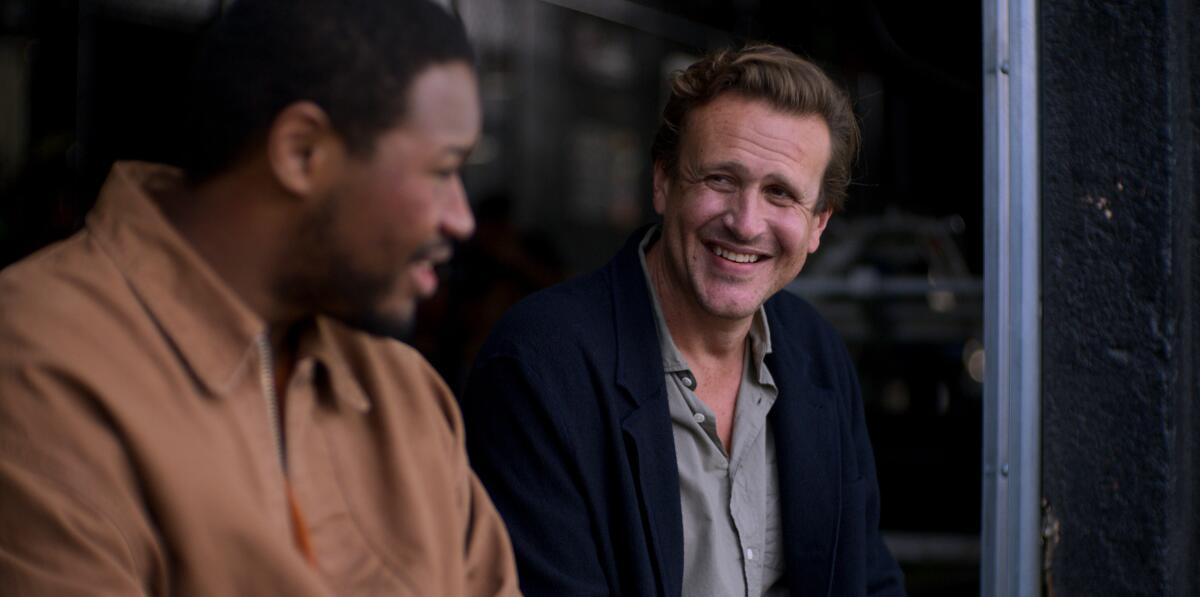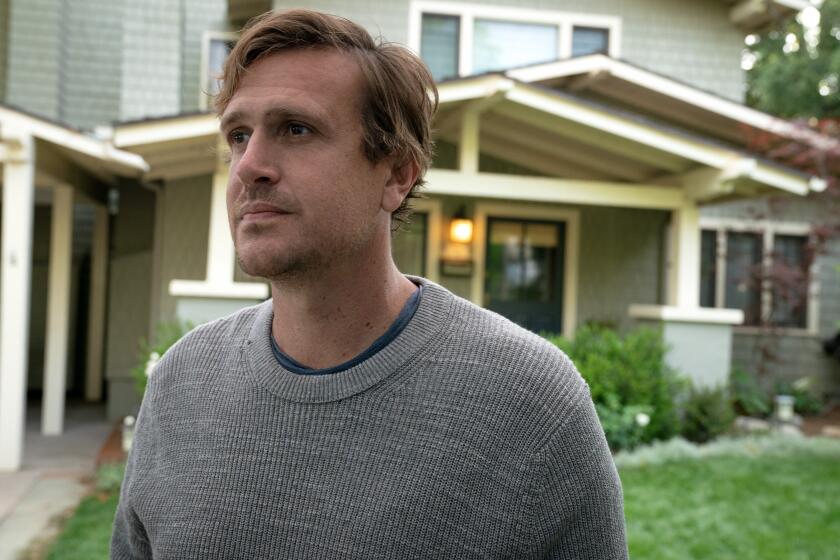A new TV show depicts brutal honesty in therapy. Real therapists say it’s not so simple

- Share via
Everyone is fighting a battle you know nothing about. And yes, that includes your therapist.
The new Apple TV+ series “Shrinking” focuses on Jimmy (Jason Segel), a recently widowed therapist who has been stuck in the throes of grief for over a year. On the first day we follow Jimmy into work, he’s hungover and frazzled. He meets with a parade of clients presenting with a variety of mundane problems; we get the sense that he has heard these same complaints on a loop from these people for a long time. And he can’t take it anymore. During a session with a long-term client named Grace (Heidi Gardner), Jimmy’s frustration bubbles up and he shouts the quiet part out loud. He demands that Grace leave her husband or he’s not going to work with her anymore. To his delight and surprise, she agrees.
This moment spurs Jimmy to change his entire approach to therapy. To this point, it feels like he’s been phoning it in by employing knowing head nods and stereotypical sayings such as “How does that make you feel?” Now, instead of engaging with clients on autopilot, Jimmy decides to let his id go wild. He starts to be radically honest in sessions, disclosing his personal opinions freely and often, and surprising clients by pulling them out of sessions and bringing them to locations like a coffee shop and an MMA sparring gym. Jimmy’s cantankerous-but-lovable mentor Paul (Harrison Ford) cautions against using these tactics with clients, claiming that it will “rob them of their autonomy.”
Therapy on TV is always heightened for the sake of entertainment, and “Shrinking” is no exception. But Jimmy’s newfound policy of radical honesty is not in itself that uncommon in the therapeutic world. Melissa Schleier, a licensed clinical social worker practicing in Connecticut, considers sharing honest observations with clients “part of the job.” However, she adds, “there are so many things you have to look at — the person’s personality, their insightfulness, your relationship with the client — for anything you say to be worth it in therapy.”
Jason Segel co-created and stars as a grief-stricken therapist in an Apple TV+ comedy, co-starring Harrison Ford and Jessica Williams.
Before engaging in brutal honesty, a responsible therapist needs to gauge several factors, says Dr. Chandler Chang, clinical psychologist and chief executive of Therapy Lab: “I think you have to consider the person’s motivation for change as well as the rapport between the therapist and the client. We can’t work together unless there’s trust and rapport. If you’re going to come at the client too directly too soon, then you rupture that trust and impair the rapport, and you’re done.”
In contrast to Jimmy’s impulsive disclosure to Grace and his last-minute decisions to take clients out into the world for part of their sessions, practicing quality therapy requires mindfulness, planning and forethought.
“Therapy and psychology are based in science, but part of it is doing a dance between being mindful of the rapport and taking care of it. Then, sometimes, the right directness lands perfectly and it’s just what the client needs,” Chang says. But, Chang cautions, “You have to be mindful of when you are providing a radically genuine observation versus advice. We have to be aware not to give advice because it changes the power dynamic.”
Schleier and Chang both believe that eliciting change takes a bit more than just blurting out directives. “It’s not so much about when to be honest with a client,” Schleier says. “It’s more about being skillful in helping them get it.”
For example, delicate phrasing might be necessary when raising a thorny truth, according to Chang. “If you’re timing it right and if you preface it as ‘I don’t know how this is going to land, but I’m going to say something that might be a surprise or even upsetting to you … this is what I see’ it can be super impactful,” he says. “In some ways, that is why people are coming to therapy. [They’re] looking for some objectivity on some situation. But it’s up to the therapist to gauge ‘How much objectivity do I share on this particular day?’”
The complete guide to home viewing
Get Screen Gab for everything about the TV shows and streaming movies everyone’s talking about.
You may occasionally receive promotional content from the Los Angeles Times.
While Jimmy does seem to have the best of intentions — he ostensibly cares about his clients and wants to see them improve — he’s also working through his own issues. And it’s clear that he isn’t fully thinking things through before suggesting huge changes in his clients’ lives. Schleier notes that she keeps a “checklist” in her head when sharing with clients, and asks herself, “Is the therapy moving without me saying this? Is this serving me or is this serving the client?” Chang echoes the sentiment: “If your interaction with your clients is self-serving in any way or if it’s a personal emotional regulation strategy, remember that it always has to be in the best interest of the client.”
If we look closely at Jimmy’s situation, much of his radical new approach to therapy is, in fact, serving his own interests. As he makes these changes in his professional life, he seems to be feeling better, shifting away from his grief-stricken emotional paralysis and recommitting himself to his work and his family, but we soon find out that his advice is backfiring all over the place. Of course it is. Instead of guiding his clients to conclusions, he’s trying to make change happen through sheer force of will. This, unsurprisingly, doesn’t work in therapy.
“We’re not in the advice business; we’re in the business of helping people learn how to think and learn how to deal with their own problems,” Schleier says. “We’re trying to put them in a place where they don’t need us. If we’re just standing there all the time, telling them what to do directly like a parent would, how are they going to be able to evolve to the next step?”
For all his faults as a therapist, Jimmy is only human. And, in the context of “Shrinking” — a comedy that wears its heart on its sleeve — it’s fun to watch him flail around and try to help his clients in a good-natured, if misguided, way. And, if all the best therapists have their own therapists (see: “The Patient,” “In Treatment,” “Ted Lasso”), perhaps we can hope to see Jimmy on the other side of the couch sometime soon.
‘Shrinking’
Where: Apple TV+
When: Any time
Streaming:
Rating: TV-MA (may be unsuitable for children under the age of 17 with advisories for violence and coarse language)
More to Read
The complete guide to home viewing
Get Screen Gab for everything about the TV shows and streaming movies everyone’s talking about.
You may occasionally receive promotional content from the Los Angeles Times.







